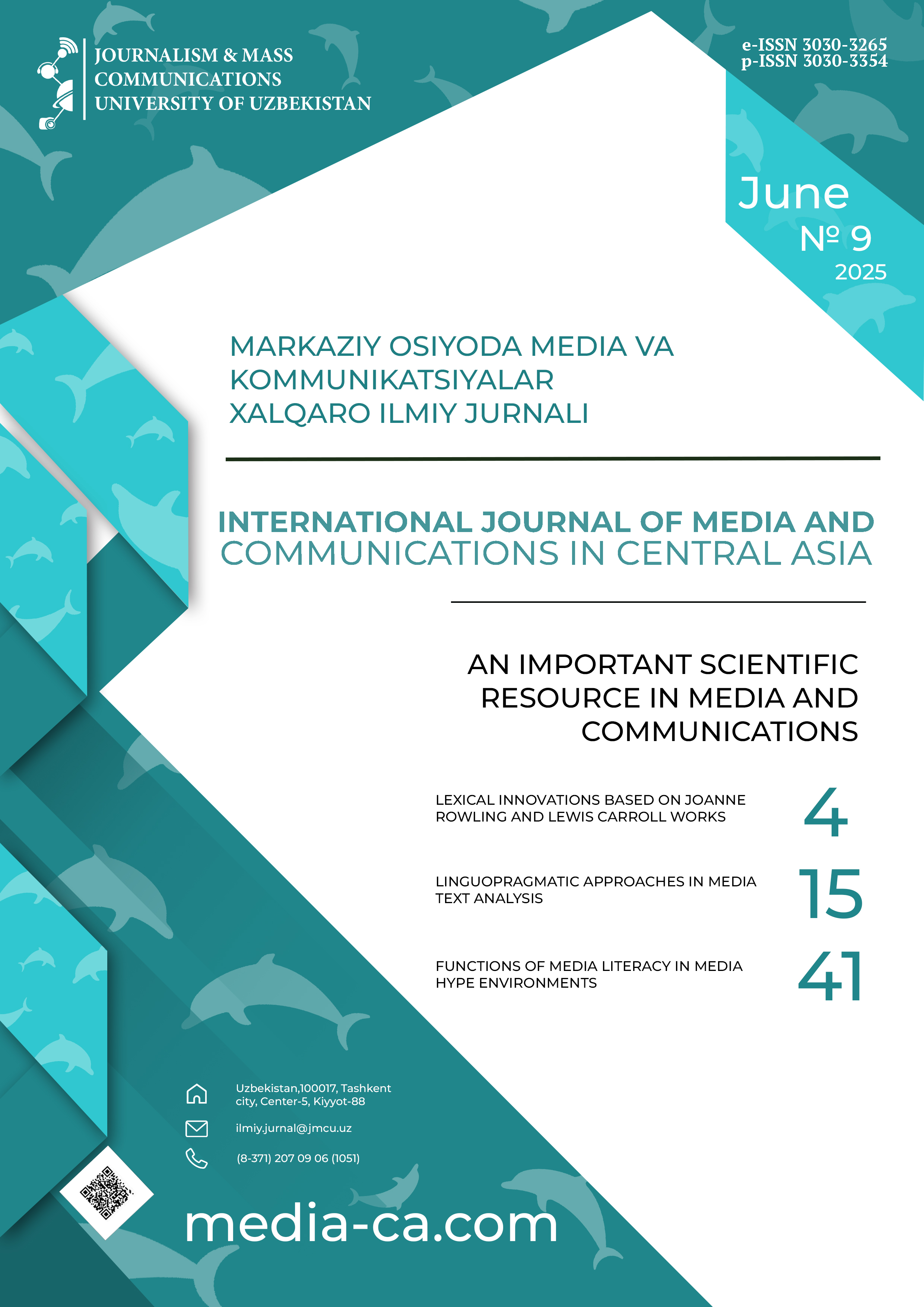ANALYSIS OF LEXICAL INNOVATIONS BASED ON JOANNE ROWLING AND LEWIS CARROLL WORKS
Published 2025-06-14
Keywords
- Lexical innovation,
- word formation,
- fantasy literature,
- Joanne Rowling,
- Lewis Carroll
- neologism ...More
How to Cite
Abstract
This article explores the linguistic creativity in the fantasy works of Joanne Rowling and Lewis Carroll, focusing on lexical innovation and word formation. It analyzes how these authors use inventive language strategies to construct immersive fictional worlds and convey thematic depth. Rowling’s approach is characterized by playful neologisms, blends, and derivations that enhance the whimsical yet socially nuanced world of Harry Potter. In contrast, Lewis relies on archaisms, classical borrowings, and semantic shifts to reinforce the allegorical and theological underpinnings of Narnia. The study offers a comparative analysis of their linguistic choices, examining the narrative, phonological, and cultural functions of new and repurposed words. It argues that both authors use lexical innovation not merely for stylistic effect but as a core tool for world-building, symbolism, and reader engagement. The article contributes to broader discussions in literary linguistics, fantasy studies, and the intersection of language and narrative.
References
- Anelli, M. (2007). Harry, a history. Pocket Books.
- Adams, Valerie. (1973). An Introduction to Modern English Word-Formation. London and New York: Longman
- Crystal, D. (2003). The language of the Potterverse. In The language revolution (pp. 45–58). Cambridge: Polity Press.
- Duffy, C. (2004). Magic words and neologisms in Harry Potter. Children's Literature Association Quarterly, 29(4), 410–415.
- Fenske, C. (2010). Word creation in fantasy literature: A linguistic approach to the study of neologisms. Frankfurt: Peter Lang.
- Garcia, A. (2008). Naming and identity in the Harry Potter universe. Journal of Literary Onomastics, 1(1), 23–35.
- Hooper, W. (1996). C. S. Lewis: A companion and guide. London: HarperCollins.
- Knowles, E. (2009). Oxford dictionary of modern quotations. Oxford: Oxford University Press.
- Langford, D. (2007). The end of Harry Potter? London: Orion Books.
- Lewis, C. S. (1950). The lion, the witch and the wardrobe. London: Geoffrey Bles.
- Lewis, C. S. (1951). Prince Caspian. London: Geoffrey Bles.
- Lewis, C. S. (1952). The voyage of the dawn treader. London: Geoffrey Bles.
- Nel, Philip. (2001). J. K. Rowling’s Harry Potter Novels: A Reader’s Guide. London: Continuum.
- Nel, Philip. (2005). “Is There a Text in This Advertising Campaign? Literature, Marketing, and Harry”. The Lion and the Unicorn, 29(2):236-267.
- Oxford English Dictionary. (2003). Muggle. Retrieved from https://www.oed.com
- Trevarthen, Geo. (2008). The Seeker’s Guide to Harry Potter. Winchester, UK, and Washington, USA: O Books.
- Thorne, T. (2008). Shoot the puppy: A survival guide to the curious jargon of modern life. London: Penguin Books.
- Vîlceanu, Titela. (2017). Dynamic Interfaces of Translation, Pragmatics and Intercultural Communication. Craiova: Universitaria.
- Vîlceanu, Titela. (2018). “An Action-Oriented Approach to Translation and Translation Studies”, Romanian Journal of English Studies, 15, pp. 122-127
- Ward, M. (2008). Planet Narnia: The seven heavens in the imagination of C. S. Lewis. Oxford: Oxford University Press.


